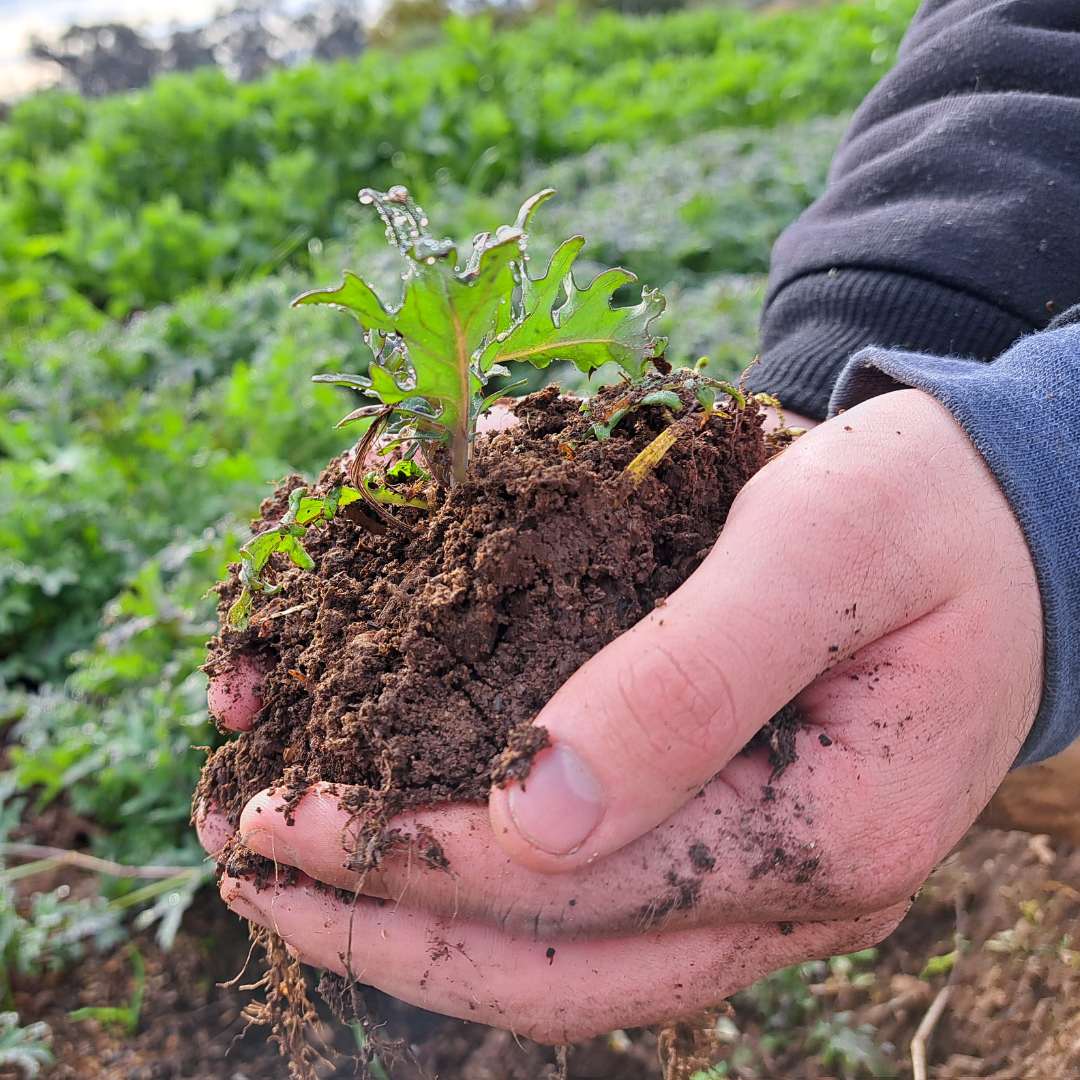



Compost, at its smallest level, is the life cycle of bacteria and other microscopic life. The bacteria eat carbon and nitrogen (e.g. wood, paper, kitchen scraps and grass cuttings) and turn it into healthy balanced soil -perfect for supporting a productive and thriving garden. This means that when we are making a compost pile, we want to give the bacteria a nice home to live in, which means we need to think about heat, moisture, aeration, and nutrient ratios.
Heat and Moisture
Just like us, to thrive, bacteria need warmth and a fair bit to drink. So, to accommodate these needs, we need to be mindful that our compost pile stays warm and moist.
We can accomplish this simply by adding water whenever we add new material to the compost pile and insulating the compost bin or bay with something like a well-ventilated box (such as a wooden crate or a lidded-plastic tub with holes cut into it) to trap heat in more effectively.
Aeration
Just as heat and moisture are important, so is air. The bacteria need to breathe! This is typically accomplished by turning the compost once every week, however, you can also poke holes in it with garden stakes or sturdy plastic pipes to create pathways for air to flow in and out of the pile.
Compost Ratios:
For compost to be as effective as possible it needs a balance of nitrogen (green things and scraps) and carbon (brown material like wood, dry grass, and paper). The recommended ratio is roughly 1 part carbon to 2 parts nitrogen. This balance gives your compost plenty of room to house bacteria and plenty of nutrients (nitrogen and other nutrients) for them to feed on while they work.
To achieve this in our own compost we tend to pour our nitrogen rich material in first then adding double the amount of carbon rich material on top.
However, realistically, not everyone has the amount of nitrogen and carbon rich materials to get a perfect ratio. Luckily, perfection is not the goal, even if your compost ratios are somewhat skewed one way or the other, your compost is likely to be indistinguishable from a perfect ratio.
In’s and out’s
So, with all that in mind, what can you put in your compost? And much more importantly, what should you be avoiding? Here’s a simple list of what we recommend putting in, and what to avoid.
In’s
- Shredded paper or plain cardboard? (carbon)
- Charcoal (carbon)
- Mulch e.g. leaf litter, straw (carbon)
- Grass clippings (nitrogen)
- Weeds (nitrogen)
- Tea and coffee grounds (nitrogen)
- Old flowers (nitrogen)
- Kitchen scraps (nitrogen)
- Eggshells (calcium)
Out’s
- Cardboard with a waxy or plastic coating
- No plastic or artificial materials
- Meat and bone (unless you have a larger hotter composting set up)
- Large chunks of wood
- Treated wood
- Cooking fat or oil
- Pet droppings (apart from chook manure)
Types of basic composting systems
Compost bin: you can buy a compost bin from almost every hardware store relatively cheap. They are effective and a fantastic way to start composting quickly and easily. However, they tend to be on the smaller side, so if you have a large amount of material to compost then you might need more than one.
Compost pile: by far the easiest (and the messiest) is to just start your compost pile in a portion of your garden and simply, well… pile it.
Compost bay: in all honesty it is not much different to the pile or the bin, as it incorporates the ease of access of a compost pile with the containment of a bin with the added benefit of being customizable to your space.
Bendigo’s Organics bin initiative: The other option if you are without the space or means to create your own compost is the organics bin present at almost every home in Bendigo. The organic waste is placed in green bags made of cornstarch that can be composted, then collected from the weekly curb side bin collection service and sent to the company Biomix in Stanhope where it is processed into rich soil ready to be planted. This compost is also available for sale for use it on your own garden!
Let’s talk about pests:
Pests (particularly rats) are often quite fond of compost as a home and a food source, especially during the winter. While there isn’t a foolproof method to keep pests out of your compost, there are measures we can take to avoid rodents making their new home in your lovely compost.
- Keep your compost moist and turn it regularly to discourage pests nesting within your compost.
- Raise compost bin on legs or stilts to keep out of reach of pests.
- Placing your compost bin on top of a slab of concrete and paving stones to prevent burrowing.
- Place chicken wire at the bottom of your composting to prevent burrowing. Just remember to fold the edges up around the bin so there are no gaps to squeeze through.
- Do not add grease, meat and or dairy to your compost.
- Use a fully enclosed bin with a tight lid.

